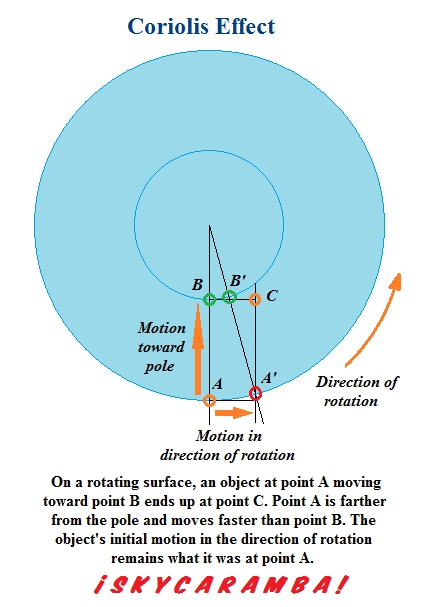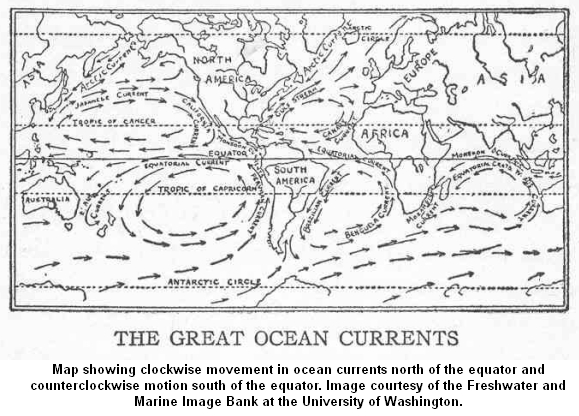¡SkyCaramba! Weekly astronomy blog for the week ending June 27, 2015
According to a popular myth, water draining from a container goes one way north of the equator and the other way south of it. Many people have convinced themselves that it’s true by observing their own toilet bowls to drain clockwise or counterclockwise. If you’re among them, I’m sorry to inform you that you’ve been misled. But it should be of consolation that the myth is rooted in something that really happens.
In the early 1800s, French scientist Gaspard-Gustave de Coriolis studied how objects move on rotating bodies. He’s most famous for explaining why an object or fluid crossing great distances on Earth seems to be deflected to the left or right. The phenomenon became known as the Coriolis Effect.
The Coriolis Effect happens partly because of intertia. That’s the tendency of an object to resist any change in motion. Any object that has mass also has intertia, whether it’s as small as an atomic particle or as large as a star. And the more mass, the more intertia. So more force is required to make it move, change direction, or stop. That’s why you can throw a baseball a lot farther than a bowling ball.
The Coriolis Effect also happens partly because the earth is round and sufficiently firm. All points on the planet go around the axis of rotation in the same amount of time. A point on the equator moves faster than a point farther north or south.
Now let’s understand that when we say an object is at rest, it’s actually moving with its surroundings at the same speed. So at rest on Earth really means moving eastward with the planet as it rotates. When something moves compared to its surroundings, the eastward component to its motion is still there.
Over a long enough distance, however, the land or sea beneath the object speeds up or slows down in comparison. The northbound object, moving eastward faster, goes off to the right in the northern hemisphere. Similarly, if the object heads south, the land or sea beneath it moves increasingly fast to the east and the object also goes off to the right. South of the equator, the eastward movement of the land and sea slow down as one goes southward. So objects moving over large distances veer to the left.
Meteorologists see the Coriolis Effect in the way winds go clockwise around high pressure cells in the northern hemisphere and counterclockwise around them in the southern hemisphere. Sailors and marine biologists know the same thing is true of ocean currents. Long distance marksmen take the Coriolis Effect into account because it can cause a bullet fired from more than 1,000 yards away to miss its target by a few inches.
But on something the size of a toilet bowl or kitchen sink, the Coriolis Effect is almost impossible to observe. The difference in latitude between the northernmost and southernmost walls is so small, there’s virtually no difference in eastward speed. Unless you wait days or weeks for all the water to settle, currents still stirring from when you filled the container have enough intrinsic force to easily overcome the Coriolis Effect.
Simply stirring the water in the sink or deflecting the water stream under the toilet bowl rim makes the water go either way. If you use enough restrooms and pay attention, you’ll find toilets that go clockwise, others that go counterclockwise, and still others in which the water flows straight out and drains without any circular motion at all.
¡SkyCaramba!

